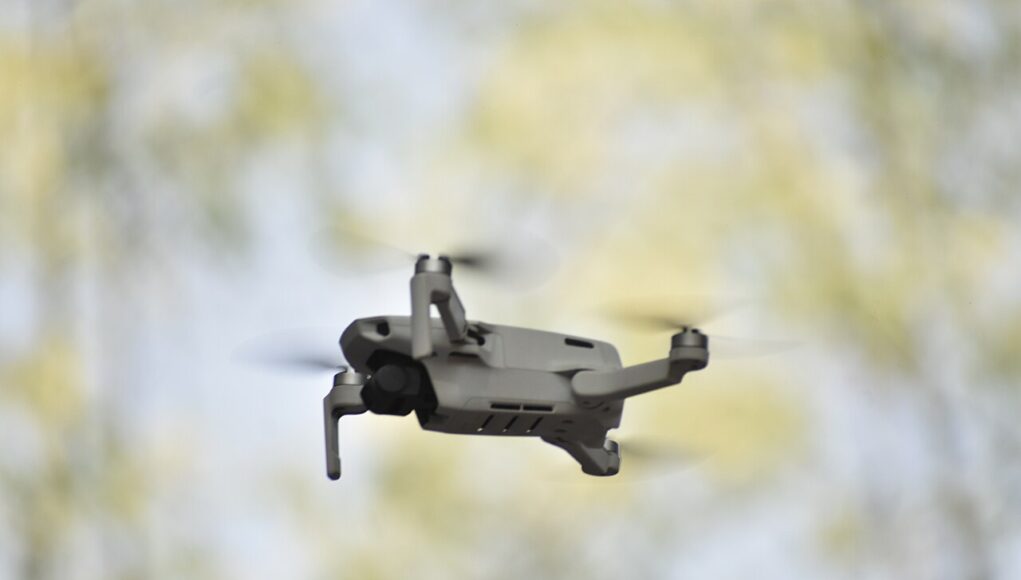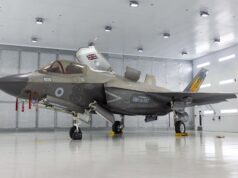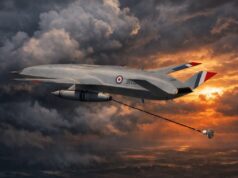Historic Environment Scotland (HES) has recently come under scrutiny for claims made on their social media accounts, suggesting they have the authority to restrict drone flights under Section 19 of the Ancient Monuments and Archaeological Areas Act of 1979.
However, Freedom of Information (FOI) responses have revealed no restrictions are in place and that their policy is primarily related to health and safety, and they could not cite any legal guidance supporting their claims.
Of course, they can restrict drone pilots from flying from their land, but can they restrict drone operators from flying over their land?
HES is a public body responsible for protecting, preserving, and promoting Scotland’s historic environment. Section 19 of the Act outlines their powers and duties concerning the management, preservation, and conservation of ancient monuments and archaeological sites on land.
These powers include restricting access to monuments, regulating activities on or around them, and undertaking preservation and maintenance. However, the Act does not extend to the airspace above these sites, meaning HES has no specific legal authority to regulate or restrict drone usage within that airspace.
Airspace over their site isn’t their property
More specifically, Section 19 of the Ancient Monuments and Archaeological Areas Act 1979 focuses on the “access to any monument under the ownership or guardianship of the Secretary of State or the Commission or any local authority by virtue of this Act.” The term “access” is traditionally held to mean access by physical access by individuals or groups, not the usage of unmanned aircraft systems or drones.
Section 19 allows for the control of access times and the ability to exclude the public for reasons of safety or preservation, but these provisions are typically interpreted in the context of physical presence or activities, not airborne activities such as drone flights.
Furthermore, while Section 19 allows organisations like Historic Environment Scotland to control access to the property under their guardianship, it is important to note that the airspace above their land is not considered part of their property. The Act does not extend its regulation to the airspace above these sites. Control and regulation of airspace is a separate issue governed by different laws. In the UK, drone operations and regulation of the airspace are primarily under the remit of the Civil Aviation Authority (CAA) and are subject to laws such as the Air Navigation Order.
Therefore, based on the wording of Section 19, it very clearly does not provide restrictions or a framework for restrictions on drone use or overflights. The control of the airspace over these monuments and properties, including drone operations, typically falls under the jurisdiction of aviation authorities, not the owners or managers of the land property.
This means that while organisations like Historic Environment Scotland have the power to control access to the property, they do not have the authority to restrict drone access to the airspace above their land, as that is governed separately by aviation laws and authorities.
Airspace regulation and the UK Civil Aviation Authority
The UK Civil Aviation Authority (CAA) is the regulatory body responsible for overseeing and managing the United Kingdom’s airspace, which includes England, Wales, Scotland, and Northern Ireland.
Although Scotland has its own devolved government, the power to regulate airspace remains a reserved matter under the jurisdiction of the UK CAA. This means that the Scottish Government and any Scottish government agency do not have the authority to manage or implement regulations regarding airspace independently.
The Freedom of Information Requests
On to the first of the aforementioned Freedom of Information Requests. The initial request sought clarification on Historic Environment Scotland’s (HES) claims regarding their power to restrict airspace under the Ancient Monuments and Archaeological Areas Act 1979, specifically in relation to drone flights over properties they care for.
The requester (me) asked for the following:
- Information on any legal advice obtained by HES on their ability to create airspace restrictions or place controls on flights over their properties, and the content of that advice.
- The specific subsection of Section 19 of the 1979 Act that HES uses to place controls on drone flights over their properties.
- The maximum altitude of the general prohibition on drones over HES properties.
- The section and subsection of the Ancient Monuments and Archaeological Areas Act 1979 that enables HES’s policy of prohibiting drone flights over their properties without permission.
However, in their response which you can read here, HES did not provide specific legal backing from Section 19 for their drone policy, indicating that this section does not grant them the power to restrict airspace.
Instead, HES suggested that their policy is designed to help them meet their legal obligations under health and safety legislation to ensure visitor safety and protect historic sites. It is important to note that health and safety legislation itself does not directly grant HES the power to restrict airspace either.
On their Facebook page, it appears, HES seem to accept that they do not have legal powers to prohibit flying and instead, their policy is designed to help comply with Health and Safety legislation, stating:
“We are looking into this at the moment. Our drone policy is designed to assist HES in meeting its legal obligations. Drones launched or overflying our sites pose safety risks. Malfunctioning drones could cause injury to visitors or staff or damage the historic properties which is why we ask drone pilots to be considerate when flying drones.”
Registered drone pilots are already required to follow health and safety legislation independently of HES’s policy.
Of note is another FOI request and the response from the CAA to the question:
“I am looking for information regarding airspace restrictions created under section 19 of the ‘Ancient Monuments and Archaeological Areas Act 1979’, specifically;
a) The number of any airspace restrictions created under this section
b) The location of any airspace restrictions created under this section
c) The maximum altitude of those airspace restrictions”
The response was quite simple, merely stating:
“There have been zero airspace restrictions created under Section 19 of the Ancient Monuments and Archaeological Areas Act 1979.”
The CAA’s response confirmed that there had been no airspace restrictions created under Section 19 of the Act.
A quick legal opinion
I contacted someone I know, a Scottish solicitor that will remain unnamed for obvious reasons, she told me:
“In my opinion, Historic Environment Scotland does not possess the legal authority to regulate drone flights in the airspace above their properties, as Section 19 of the Ancient Monuments and Archaeological Areas Act of 1979 does not extend to this aspect. However, it’s important to emphasise that this is merely my interpretation of the law, and drone operators should always act responsibly and adhere to the UK Civil Aviation Authority’s regulations and guidelines when flying around historic sites.”
Just because you can, doesn’t mean you always should
Despite Historic Environment Scotland’s limited legal authority to regulate drone flights above their properties, it remains crucial for drone operators to take care and fly responsibly around historic sites.
These sites are not only culturally and historically significant, but they also often represent delicate and irreplaceable structures that can be easily damaged by accidents or negligence.
Responsible drone flying around historic sites helps to:
- Preserve the integrity of the sites: By flying with caution, drone operators can minimise the risk of accidentally causing damage to the monuments or structures. Even minor damage can have long-lasting consequences for these sites, potentially undermining their stability or historical value.
- Ensure visitor safety: Many historic sites are popular tourist attractions, and careless drone flying could pose a risk to the safety of visitors. By adhering to the CAA’s regulations and guidelines, drone operators can help ensure a safe experience for all visitors to these locations.
- Protect the ambience and experience: Historic sites often provide a unique and peaceful atmosphere for visitors to appreciate and contemplate the past. Excessive or intrusive drone activity can disrupt this experience, detracting from the overall enjoyment of these sites.
- Respect local wildlife: Some historic sites may be home to protected or sensitive species of flora and fauna. Responsible drone flying helps to minimise disturbance to these species and maintain the ecological balance of the area.
Flying drones responsibly around historic sites is essential for preserving their cultural, historical, and ecological value, as well as ensuring the safety and enjoyment of visitors. By adhering to the CAA’s regulations and guidelines, drone operators can contribute to the long-term protection and appreciation of these irreplaceable landmarks.
Believe it or not, I believe that while it’s legal to fly over these sites, oftentimes, it’s just best not to.














Nearly every interesting TV programe including news bulletins these days starts with a drone shot and especially YouTube videos. However, there are privacy issues with flying them over residential property, security issues with flying them over sensitive military bases etc and obviously, flying them near airports/airfields.
Clearly George does not want to fall foul of any lawful restrictions on drones and from the replies given to his enquiries, he should be able to enjoy his new hobby responsibly. Rock on George!
I mean man don’t talk about drones, I got one of these good ones and it’s over 250g so I needed to answer some questions more like the 20 questions game there as simple like, Michael and Jo go to the park and see a plane should they fly there drones in front of it so that the driver sees his drone so won’t crash into it! Oh boy nah these are questions that a criminal could answer!
eh?
‘That would be an ecumenical question!‘
Feck, drink, girls 😂😂😂
Ok then. Happy flying 😂😂😂
The National Trust stance would be interesting.
They have always been absolutely vicious about casual photography – starting with a “yes but we want a £500 fee” when I looked into it 25 years ago.
Unfortunately Matt, the reason being commercial photography. A church I know found a father and son roll up with lights and so forth for a shoot, even going as far as moving furniture around for a composition! I would hope someone strolling about with a small camera or camera phone would be left alone.
Drones are intrusive. Flying them should be controlled.
If you crashed into something important and break it can you be held responsible for the cost of repairs? Is there some kind of drone insurance.
Someone gave me a petrol airplane ages ago and I’ve never used it. Never flown one. Not sure I’ve got a controller with it or petrol. In fact I’m not even sure how to start it. WW1 style turn the propeller?
Yes, public liability insurance.
Hi MS – those sort of hobby remote controlled petrol airplanes were usualy fitted with a glow plug to start them. You needed a bit of electrical battery kit to connect to them, and then yes, you flipped the propeller. My cousin had a primitive one with wires attached and you could only fly it in a circle around you. They could easily take the tip of your finger off if you were careless!
This things about 5 feet long with longer wings. I will use it one day. Had thought about sending it to Ukraine but not sure where to send it.
I’m guessing that because it might be deemed recreational space that might bring it into conflict with the appropriate drone laws.
When I first got into drone flying you had to build the drone yourself. All who did this were enthusiasts, had BMFA membership and insurance (and an anorak). We used to use Arduino controllers, Nintendo controller WII components and parts from wireless security cameras. The whole scene went down hill once the off the shelve hobby drone showed up and with it irresponsible flyers.
There are vids on YouTube of Drones flying over certain UK defence installations, so this is serious business and difficult to prevent.
They need some of those big tv aerial guns to point at them. Shoot the waves
One of the RAF Reg Wings has taken the role, but they cannot be everywhere.
Additional postings for the UK armed forces perhaps.
“Ukraine says it is rapidly increasing its production of drones as demand grows on the front line.
The government has relaxed import laws and scrapped taxes for drone parts and equipment.
The expansion is being funded by a successful fundraising campaign called the Army of Drones.
More than $108m (£87m) has been raised with the help of celebrity supporters like Star Wars’ Mark Hamill.
As well as buying and building drones for the war, the money is being spent on training new pilots for the front line.”
LINK